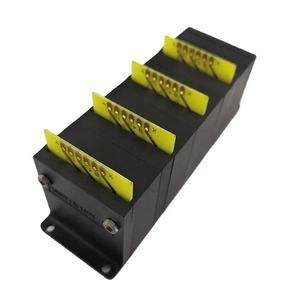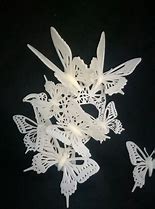The Secret Sauce of 3D Printing: What’s Really in Your Filament?
(What Materials Are Used In 3d Printing)
Imagine building a house without bricks, baking a cake without flour, or painting a masterpiece without colors. That’s what 3D printing would be like without its materials. The magic of turning digital dreams into real-world objects relies on a wild mix of substances. Let’s dig into the toolbox of 3D printing and see what’s cooking.
Plastics are the rock stars here. You’ve probably heard of PLA and ABS. PLA is the friendly, eco-friendly option made from cornstarch or sugarcane. It smells like candy when it melts and works great for toys, phone cases, or decorative stuff. ABS is tougher, like the plastic in LEGO bricks. It can handle heat and stress, making it perfect for car parts or gadgets. Both come in rainbow colors, so your prints can look as fun as they are functional.
Nylon steps in when you need something bendy but strong. Think of shoe soles, hinges, or even fabric-like textures. It’s slippery, durable, and can survive wear and tear. Then there’s PETG, a plastic that’s crystal-clear and tough enough for water bottles or outdoor gear. It’s like the superhero version of everyday plastic.
But 3D printing isn’t just for plastics. Metals like titanium, aluminum, and stainless steel get their turn too. These aren’t your average metals—they’re powdered and fused with lasers or electron beams. The result? Rocket parts, medical implants, or custom tools that can survive extreme conditions. Metal printing isn’t cheap, but it’s a game-changer for industries needing precision and strength.
Resins are the artists of the bunch. Used in printers that cure liquid with UV light, resins create smooth, detailed models. Dental molds, jewelry, and miniatures come alive with resins. Some even glow in the dark or mimic rubber. Just don’t forget your gloves—uncured resin is sticky stuff.
Now for the weird and wonderful. Ever seen a 3D-printed wood chair? Filaments mixed with wood dust let you print objects you can sand and stain like real timber. There’s also ceramic clay for pottery, concrete for building structures, and even edible inks for chocolate or sugar sculptures. Yes, you can print your birthday cake—if you’re patient enough.
Scientists keep pushing limits. Carbon fiber blends make prints lighter than aluminum but stronger than steel. Graphene-infused materials conduct electricity, opening doors for smart devices. Biodegradable filaments break down in compost, tackling plastic waste. And researchers are experimenting with living cells to print human tissue. One day, 3D-printed organs might save lives.
Not every material is user-friendly. Some need super-hot printers or toxic chemicals. Others cost a fortune or require fancy equipment. But hobbyists stick to PLA and resins for good reason—they’re easy, safe, and get the job done.
The future? Picture printing a house with local dirt, crafting clothes from algae-based gel, or nibbling a cheese sculpture from your desktop printer. As materials evolve, so does what we can create. The question isn’t “what can we print?” but “what *shouldn’t* we print?”
(What Materials Are Used In 3d Printing)
From humble plastics to mind-blowing metals, 3D printing materials are as diverse as the ideas they bring to life. Next time you see a 3D-printed object, remember—it’s not just about the machine. It’s about the stuff that makes the magic stick.
Inquiry us
if you want to want to know more, please feel free to contact us. (nanotrun@yahoo.com)

